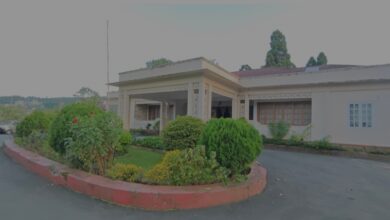Examining the root cause of shoe attack on CJI

Editor,
The unfortunate incident in the Supreme Court on October 6, where a lawyer flung his shoe at the Chief Justice of India, BR Gavai, is condemnable. While the act of throwing a shoe is undoubtedly disruptive and merits condemnation for breaching courtroom decorum, it is intellectually dishonest to frame it solely as an “attack on the Constitution” or a symptom of right-wing hatred without addressing the provocation that ignited it.
The root cause of this episode lies in the CJI’s derogatory and dismissive remarks toward Sanatan Dharma, which insulted the religious sentiments of millions and prompted the lawyer’s extreme reaction. To ignore this is to absolve the judiciary of accountability while demonising those who feel compelled to defend their faith.
Let us first revisit the facts of the case. The lawyer had filed a Public Interest Litigation (PIL) seeking the restoration of a dilapidated statue of Lord Vishnu at a UNESCO World Heritage site in Khajuraho, Madhya Pradesh—a matter rooted in cultural preservation and devotion to a deity central to Hindu cosmology. In dismissing the plea as a “stunt,” Justice Gavai remarked in open court: “Go and ask the deity himself to do something. If you are saying that you are a strong devotee of Lord Vishnu, then you pray and do some meditation.”
This statement was not merely judicial sarcasm; it was a blatant mockery of Hindu beliefs, reducing sacred devotion to a trivial suggestion of “meditation” and implying that appeals to divine intervention are frivolous.
Most opinions that have emerged omit this context, instead portraying the incident as an unprovoked assault on the “third pillar of democracy.” But who truly initiated the disrespect? Judges, especially the CJI, hold a position of immense power and must exercise restraint in their language, particularly on sensitive religious matters. Justice Gavai’s comment echoes a colonial-era disdain for indigenous faiths, treating Hindu devotion as superstition unworthy of serious consideration.
This is especially troubling given his background as someone from a Dalit community who has embraced Buddhism, following in the footsteps of Dr B.R. Ambedkar. Buddhism, while sharing historical roots with Hinduism, has often been positioned in opposition to certain Brahmanical practices, but this does not grant license to belittle Sanatan Dharma from the judicial pulpit.
As a figure who has risen through affirmative action and represents marginalised communities, the CJI should be acutely aware of the pain caused by religious insensitivity. Instead, his words alienated a vast segment of society that views Lord Vishnu as a protector and embodiment of eternal dharma. If Sanatan Dharma truly values “tolerance, restraint, and pluralism,” then why did the CJI fail to embody these virtues in his response to a legitimate cultural concern?
There is an attempt to link this incident to broader “right-wing ecosystem” approval, and communal violence is a red herring. Yes, there have been disturbing rises in communal incidents—from 32 in 2023 to 59 in 2024, as per the Centre for Study of Society and Secularism—and mob lynchings disproportionately affecting minorities. Caste-based violence against Dalits remains a scourge, particularly in BJP-ruled states. However, conflating these with a single act of protest in court ignores the specific trigger: judicial overreach into religious mockery. The lawyer’s claim of acting on “divine instructions” may seem bizarre, but it reflects deep-seated frustration among Sanatanis who feel their faith is under siege in secular institutions. Rather than labelling this as “fascistic” or “Manuvadi,” we should question why a judge’s insensitive remark went unchallenged, while the reaction draws universal outrage.
Moreover, the opinion’s emphasis on the CJI’s Dalit and Buddhist identity as a potential intersection with “majoritarian and casteist prejudice” inverts the narrative. If anything, it is precisely because of this background that Justice Gavai should have avoided insulting Sanatan Dharma in the first instance. His position demands impartiality, not remarks that could be interpreted as biased against the majority faith. The fact that he chose not to press charges and continued proceedings is commendable, showing personal resilience, but it does not erase the initial derogation. The government’s silence may stem from recognition that the judiciary itself bears partial responsibility for escalating tensions.
In conclusion, while violence or disruption in court cannot be condoned, the shoe incident was not an isolated act of hatred but a provoked response to the CJI’s derogatory dismissal of Hindu devotion. True justice requires holding all parties accountable, including those in robes. If we are to preserve civil coexistence, we must demand that judges respect all faiths equally, rather than using the bench to mock them. Sanatan Dharma’s timeless principles deserve defence, not derision—and certainly not from those entrusted to uphold the Constitution for all Indians.
Yours etc.,
A concerned citizen





